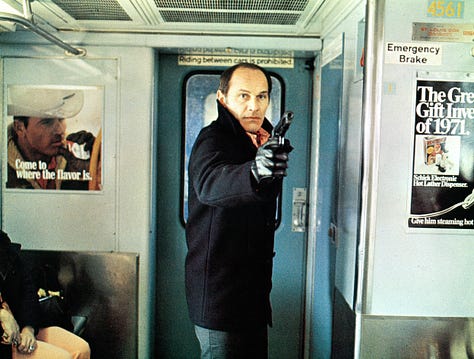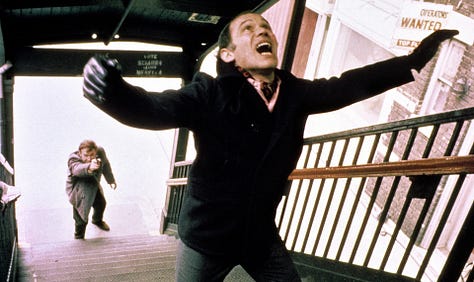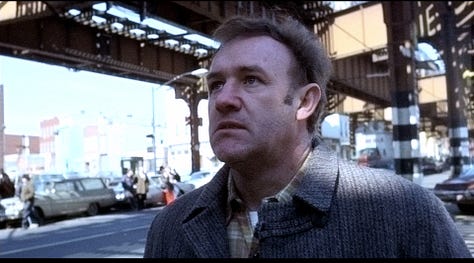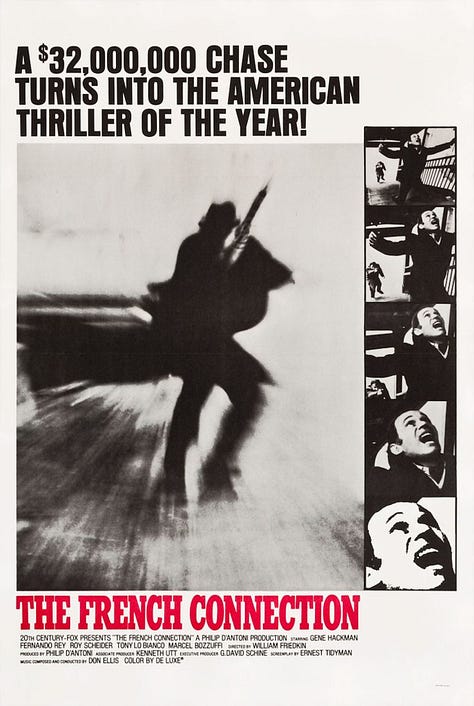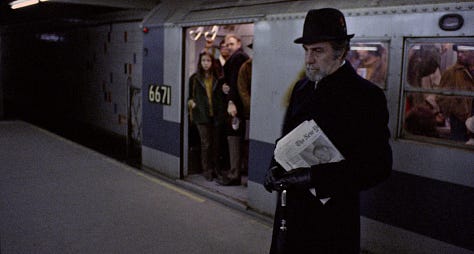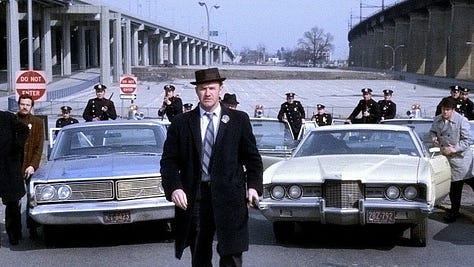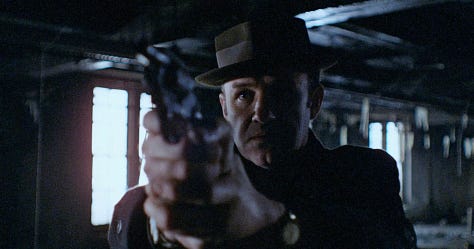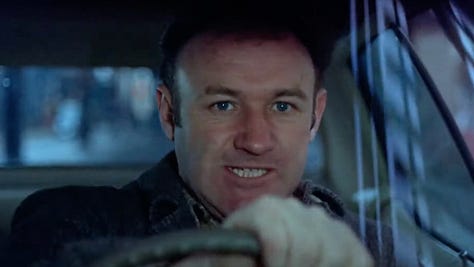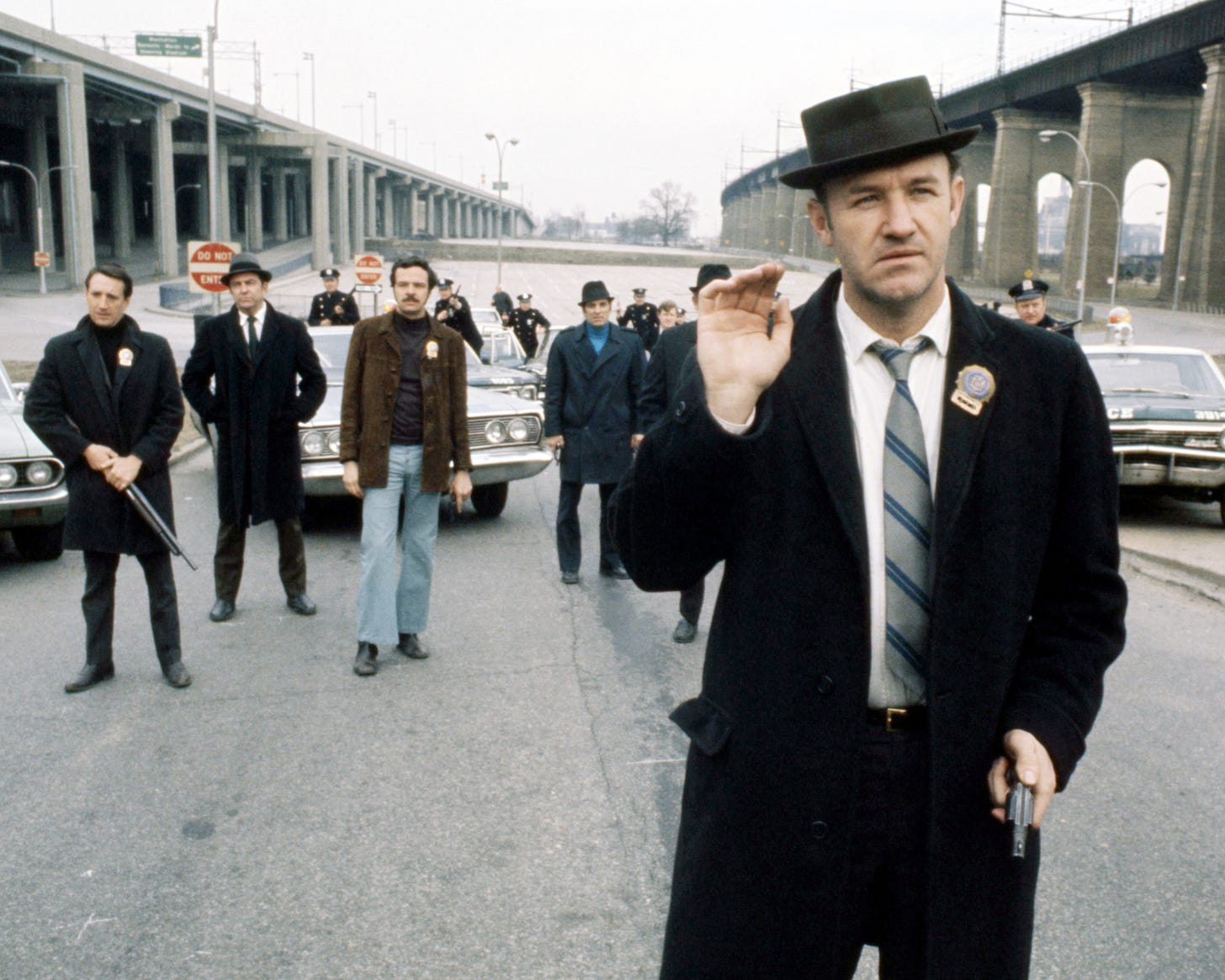THE FRENCH CONNECTION
1971 • William FriedkinCast: Gene Hackman, Fernando Rey, Roy Scheider, Tony Lo Bianco, Marcel Bozzuffi, Frédéric de Pasquale, Bill Hickman, Eddie Egan, André Ernotte
Screenplay: Ernest Tidyman; Based on The French Connection by Robin Moore
Cinematography: Owen Roizman
Music: Don Ellis
20th Century-Fox
You put a shiv in my partner. You know what that means? Goddammit! All winter long I got to listen to him gripe about his bowling scores. Now I'm gonna bust your ass for those three bags and I'm gonna nail you for picking your feet in Poughkeepsie.
Directed by William Friedkin, The French Connection is a crime thriller set in the harsh and gritty streets of New York City in the early 1970s. It follows the relentless pursuit of two narcotics detectives, Jimmy "Popeye" Doyle (Gene Hackman) and Buddy "Cloudy" Russo (Roy Scheider), as they investigate a large-scale heroin smuggling operation. The detectives become obsessed with bringing down Alain Charnier (Fernando Rey), a French drug lord, and his associates. As the tension escalates, Popeye Doyle's unorthodox and intense methods lead to a high-stakes cat-and-mouse game through the streets of New York.
The film's dark and realistic portrayal of the criminal underworld provides viewers with an unflinching look at drug trafficking during that era. The movie doesn't shy away from depicting the harsh realities of the criminal world, presenting a raw and unfiltered view of the streets where drug deals unfold and lives hang in the balance.
The 1970s was a transformative decade for American cinema, giving rise to a new breed of films that were dark, gritty, and unapologetically intense. Laden with heavy violence, the movie thrust audiences into the harsh realities of the criminal underworld. The streets of New York were shown in their raw and unfiltered state. The French Connection was a crime thriller that not only defined the era but also marked a pivotal moment in the director's career. Friedkin's directorial choices, including his use of documentary film techniques, contribute to the film's realistic feel. The gritty cinematography and intense performances emphasize the harshness of the environment in which these characters operate. For William Friedkin, this was the film that etched his name in the annals of history. Friedkin's ability to blend action, cinematic realism, art, and humor set a new standard for the genre.
What makes the film truly unique is the intensity of the sleaze that permeates the film. Friedkin fearlessly delves into the grimy underbelly of drug trafficking, presenting a world that is as unforgiving as it is captivating. The film doesn't romanticize or sanitize the criminal world; instead, it exposes the audience to the morally bankrupt reality of drug trafficking. Friedkin's portrayal is unflinching and visceral.
Gene Hackman, in his Oscar-winning performance as Popeye Doyle, brings an unparalleled intensity to the character, making Doyle a memorable and complex figure. Unlike traditional heroic figures, Popeye Doyle exhibits a range of morally ambiguous traits that challenge the conventional norms of heroism. His relentless pursuit of justice is often marred by a lack of adherence to established rules, a disregard for due process, and a willingness to employ unorthodox and even unethical methods to achieve his goals. Popeye's rough demeanor, abrasive personality, and propensity for violence make him a complex and imperfect protagonist. He’s also kind of racist. His actions, while driven by a genuine desire to combat crime, often blur the line between right and wrong. Despite being on the side of the law, Popeye's character embodies shades of gray, reflecting the gritty and morally ambiguous nature of the world depicted in the film.
Then there is the iconic car chase sequence, where Doyle recklessly pursues an elevated train in his quest to apprehend a suspect. Friedkin opted for a documentary-style approach, eschewing traditional staged setups for a more spontaneous tone. The chase was filmed without permits, utilizing a combination of hidden cameras and practical locations. There are no special effects, just screeching tires, near misses, and unpredictable obstacles to create a heart-pounding action sequence. Cinematographer Owen Roizman's skillful handheld camerawork adds to the intensity, placing the audience right into the action. This groundbreaking car chase might be the greatest of all time.
This is Doyle. I'm sittin' on Frog One.
Notable Awards & Accomplishments
Academy Award Winner: Best Picture
Academy Award Winner: Best Actor (Hackman)
Academy Award Winner: Best Director
Streaming: MAX
Digital Rental/Purchase: Available at major digital retailers
Physical Media: Available on Blu-Ray and DVD
